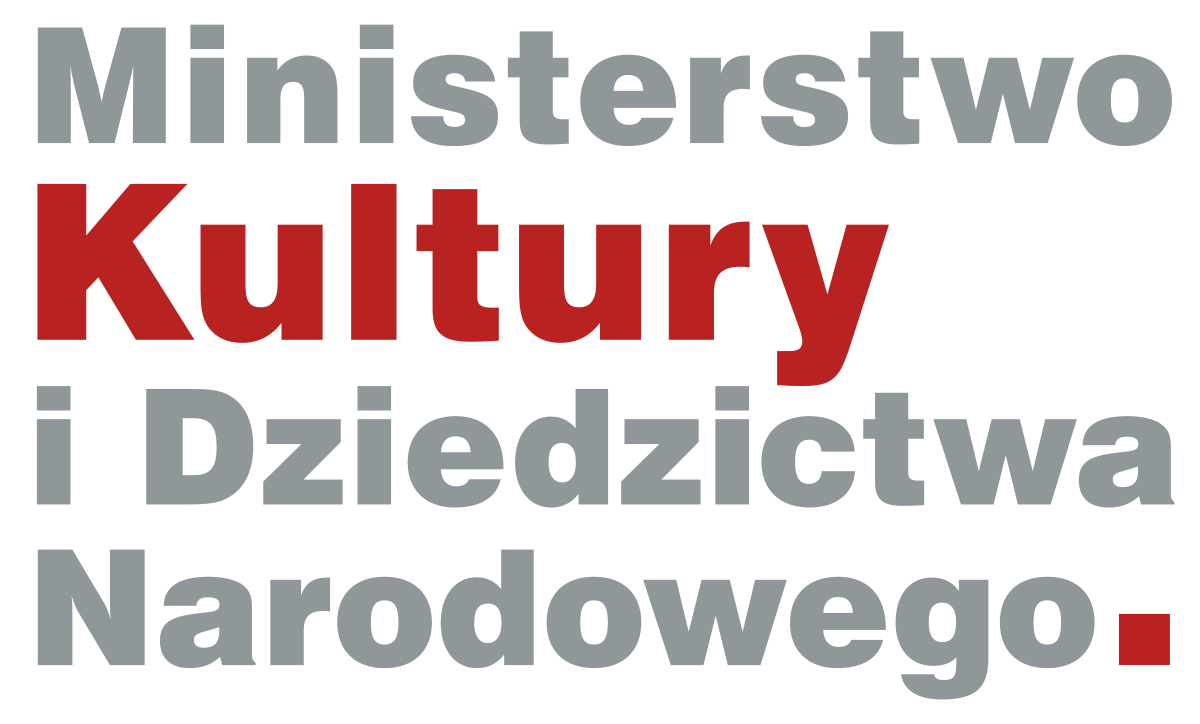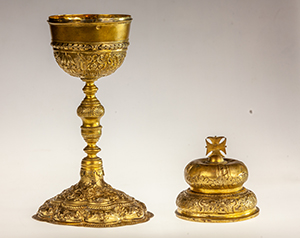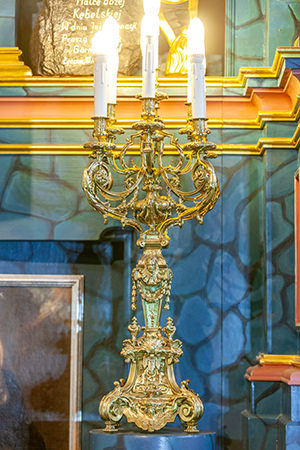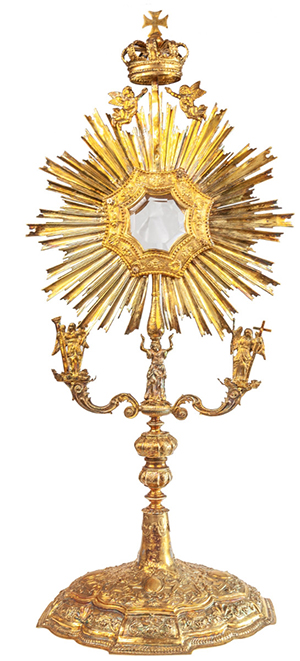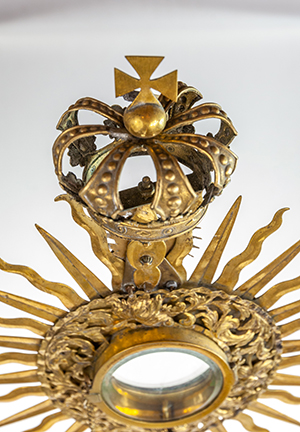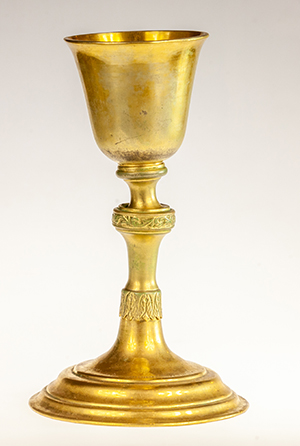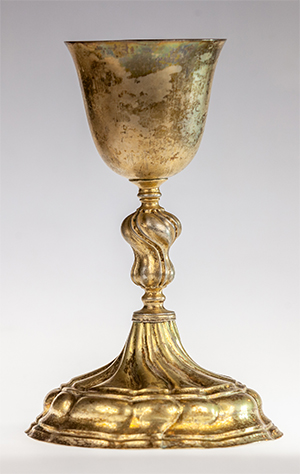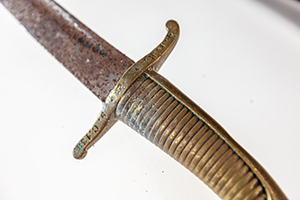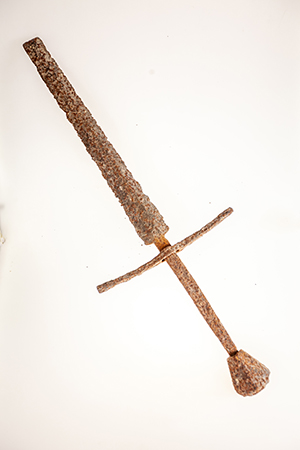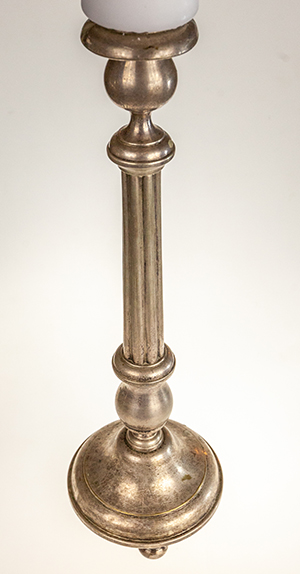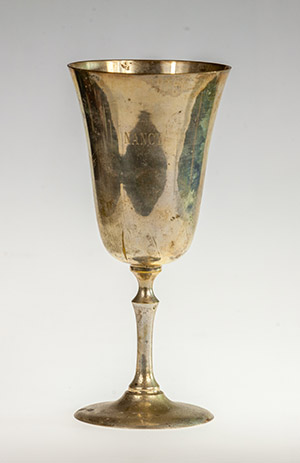The pyx is located in the museum below the chapel. The exposition is located in the lower tier of the castle church built in the 14th century. The upper tier (rebuilt several times) is the chapel of the Holy Mother of Kębło.
The base of the pyx is circular, wavy and covered with multileafed regenerative ornaments. Nodus or decorative thickening on the corpus is pear-shaped, like a vase. Semicircular cap. The cover has a narrowing. Comparavit (...) Anno dn. 1735' is engraved in the bottom of the lid. The edge of the base is surrounded by a stripe of locks. The pedestal is squab, segmented, decorated with a tape broken regeneratively alternating with seashells.
The top of the base with a wavy multi-leafed edge, covered with ornamentation of the tape broken regeneratively. Among the tape motifs of acanthus and campanula leaves. The top of the base is conical and ends with a lambrekin band. The lower part of the nodus is decorated with strips of lock, the upper part with palm trees. The bottom of the cap is decorated with a tape broken regeneratively. Among the straps there is a garland of flowers and leaves. The centre of the cap is surrounded by a wreath of laurel leaves, with a smooth stripe above the wreath. The cover in the lower part is domed and trimmed with a volute-floral motif and a stripe of locks on the top, under the narrowing.
A pair of candelabras is located in the chapel of the Holy Mother of Kębło. The candelabras are eight-candles and they are placed on both sides of the main altar in the Chapel. Kandelabry są ośmio-świecowe i są umieszczone po obu stronach ołtarza głównego w Kaplicy.
The candelabra is a large, standing, several-armed candlestick. Candelabras or candlesticks were made mainly of metal and were known in ancient times. At the end of the 17th century, two-armed candelabras were popular, three-armed in the 18th century, and in the 19th century, several-armed candelabras were also made. The candlestick was built of a base, a shaft and, most often, a removable retable with arms.
The style of the candelabra is neo-Baroque. Material and technique - bronze. Candelabras were painted in gold. The base has 4 legs, passing into the shaft, decorated with numerous ornaments and a retable with 8 arms on which there are candles. The candelabras form part of the main altar of the Holy Mother of Kębło.
Convex base embossed with regency ornament. The base’ edge with slanted scrolls. Ribbed plinth consists of several segments. On top of the conical ended base there are four round cartouches among leaves of acanthus and campanula. Smooth cone of the base ended with round lambrequin. Pear shaped nodus.
Oval base with scalloped edge and convex, embellished top ended conically. Cone ended with a round lambrequin. Pear shaped nodus with stones and a ring. Stem ended with baluster that is embellished from the bottom with a wreath of lanceolate leaves. The sun in the halo of alternating straight and wavy beams. A royal crown at the top. Lunette composed of rings. The front ring embossed with a scroll intertwined with grape leaves. On the ring there are six mountain crystals and below a cabochon of yellow glass /topaz/.
Above the ring is a torso of God the Father. On the other side of the sun is an embossed openwork motif of acanthus leaves.
The top of the base is embellished with a vine and four flowers. At the reverse side of the plaque engraved “Remont 1970”
Style: baroque
Material and technique: embossed silver, gold-plated
Style: classicism. Material and technique: brass, silver plated
Engraving at the top of the base: “Memento anime Stanislai Sacerdotis + die 20 Juni A.D. 1864”
Base with scalloped edge, pear shaped nodus. Semi-oval bowl with flared edge, smooth. Spiral twisted nodus with vertical groves. Base with separated plinth with four slightly twisted groves. Paten Ø concave with engraving of an isosceles cross in a wreath. Paten stamped with “CE” Mark from 1806 - 1807.
Style: baroque
Material and technique: embossed silver, gold-plated, partially casted
The saber “remembers” the January Uprising. It was bought from a private collector via RTPW.
A sword from late Middle Ages from Wąwolnica City Museum.
In Wąwolnica City Museum there is a sword from late Middle Ages that has never been seen publicly. The museum that holds this exhibit has quite unusual location as it is located in the thumb of the church’s chapel. The museum was founded by a priest named father Jan Pędziora — then pastor at the St. Adalbert Church in Wąwolnica and by the Society of Friends of Wąwolnica in 1995. Among its exhibits there are interesting artifacts connected to the history of the region from the Paleolithic era to modern times.
The sword from the exhibition was available to us thanks to mrs Wiesława Dybała, the curator of the museum and also father Jerzy Ważny. According to mrs Jadwiga Teodorowicz-Czerpińska, the person who gifted the sword to the museum, it was found during field work in and undisclosed location near Nałęczów.
Brass, silver plated brass, the end of the 18th century. 26 cm
Page 1 of 2




